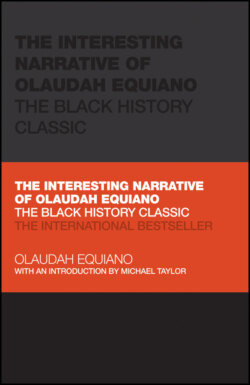Читать книгу The Interesting Narrative of Olaudah Equiano - Olaudah Equiano - Страница 10
EMERGING ABOLITIONIST
ОглавлениеIn 1777, Equiano was back in London, which he had come to regard as ‘home’, and where abolitionism was emerging from the crucible of dissenting Protestant thought. In its earliest years, the abolitionist ‘movement’ operated only in sporadic bursts, often at the prompting of Granville Sharp. The son of a Northumbrian deacon, Sharp had rescued African teenager Jonathan Strong from deportation to Jamaica in 1765 before intervening in the Somerset litigation of 1772–73. Here, the issue before the English courts concerned the ability of a planter to re-enslave a person, in this case the freed black man James Somerset, on British soil. Although Lord Mansfield ruled in time in Somerset's favour, it was not the sweeping condemnation of slaveholding that so many had wanted. The Morning Chronicle described the judgment as ‘guarded, cautious, and concise’.
In the spring of 1783, Equiano made his first momentous contribution to the abolitionist cause. He delivered some highly disturbing intelligence to Sharp, who was working as a clerk at the Ordnance Office. ‘Gustavus Vasa a Negro’, Sharp wrote in his diary, ‘called on me with an account of 130 Negroes being thrown Alive into the sea from on Board an English Slave Ship.’ (Beyond the authorship of the Narrative, Equiano went almost universally by the name of Vasa.)
The ship in question was the Zong, which in 1781 had set off from the Gold Coast for Jamaica with 442 Africans in its hold. Having mistakenly sailed past Jamaica by several hundred miles, and finding themselves short of drinking water, the crew of the Zong had elected – as Equiano accurately reported – to throw overboard almost one-third of the people they were trafficking. They did so for purely commercial reasons: the insurance law of the day provided nothing if enslaved Africans died of natural causes such as dehydration, but did compensate traders for any ‘cargo’ that they needed to jettison in order to preserve the remainder. It followed that, when the case of the Zong came before the courts, it was not on account of criminal charges; instead, the dispute arose because the insurers refused to pay up. It would take an appeal and the scandalous evidence that the Zong in fact had plenty of water on board for the insurers to win, but Sharp would fail to bring criminal charges against the crew.
Even so, the Zong massacre proved a catalyst for abolitionism. By 1787, the Society for Effecting the Abolition of the Slave Trade had formed under the political leadership of William Wilberforce. Equiano – in alliance with other once-enslaved Britons such as Ottobah Cugoano – established the corresponding society known as the Sons of Africa. Working in tandem, Wilberforce's abolitionists and the Sons of Africa began flooding the London papers with anti-slavery material, constructing mass petitions calling for abolition, and publishing tracts which attacked the slave trade on moral, religious, and even economic grounds. Equiano's pugnacious dispute with pro-slavery interests in the Morning Chronicle brought him ever greater renown.
Equiano had also taken a position with the Committee for the Relief of the Black Poor. The Committee had been founded in 1786 to provide assistance to the thousands of black loyalists whose reward for fighting with the Crown against the American revolutionaries was freedom – albeit a freedom which often left them languishing on the streets of London. Almost immediately, the Committee set about resettling these black loyalists to Sierra Leone, the new British colony on the coast of Guinea. Appointed as a commissary with responsibility for ‘provisions and stores’, Equiano's time with the Sierra Leone project would end in ignominy – he was dismissed after complaining about the colony's financial mismanagement. But it was in this context of increasing public engagement with the slavery issue that, in 1789, he wrote and published the Interesting Narrative.
